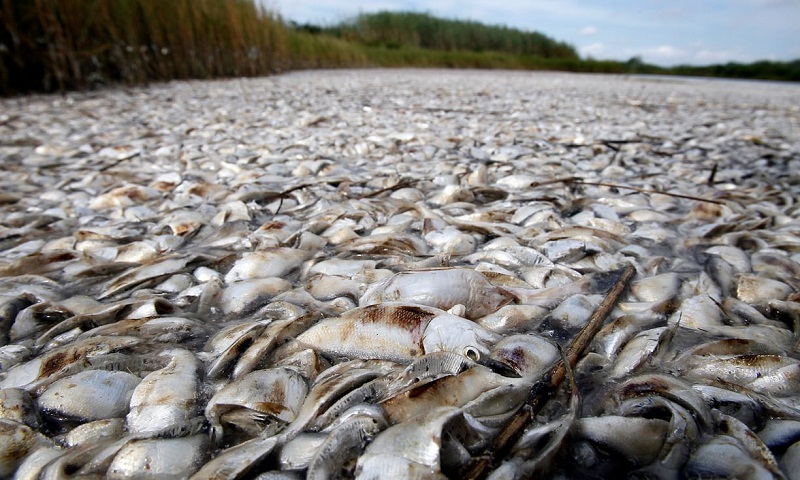Meat industry blamed for largest-ever ‘dead zone’ in Gulf of Mexico

The global meat industry, already implicated in driving global warming and deforestation, has now been blamed for fueling what is expected to be the worst “dead zone” on record in the Gulf of Mexico. Toxins from manure and fertilizer pouring into waterways are exacerbating huge, harmful algal blooms that create oxygen-deprived stretches of the gulf, the Great Lakes and Chesapeake Bay, according to a new report by Mighty, an environmental group chaired by former congressman Henry Waxman. It is expected that the National Oceanic and Atmospheric Administration (Noaa) will this week announce the largest ever recorded dead zone in the Gulf of Mexico. It is expected to be larger than the nearly 8,200 square-mile area that was forecast for July – an expanse of water roughly the size of New Jersey. Nutrients flowing into streams, rivers and the ocean from agriculture and wastewater stimulate an overgrowth of algae, which then decomposes. This results in hypoxia, or lack of oxygen, in the water, causing marine life either to flee or to die. Some creatures, such as shrimp, suffer stunted growth. Algal blooms themselves can cause problems, as in Florida last summer when several beaches were closed after they became coated in foul-smelling green slime. America’s vast appetite for meat is driving much of this harmful pollution, according to Mighty, which blamed a small number of businesses for practices that are “contaminating our water and destroying our landscape” in the heart of the country. “This problem is worsening and worsening and regulation isn’t reducing the scope of this pollution,” said Lucia von Reusner, campaign director at Mighty. “These companies’ practices need to be far more sustainable. And a reduction in meat consumption is absolutely necessary to reduce the environmental burden.” The Mighty report analyzed supply chains of agribusiness and pollution trends and found that a “highly industrialized and centralized factory farm system” was resulting in vast tracts of native grassland in the midwest being converted into soy and corn to feed livestock. Stripped soils can wash away in the rain, bringing fertilisers into waterways. Arkansas-based Tyson Foods is identified by the report as a “dominant” influence in the pollution, due to its market strength in chicken, beef and pork. Tyson, which supplies the likes of McDonald’s and Walmart, slaughters 35m chickens and 125,000 head of cattle every week, requiring five million acres of corn a year for feed, according to the report.

